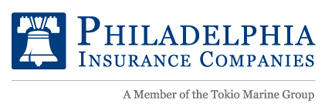Issues & Answers Special Advertising Section:
July 2021

Michael Flood
Vice President of the Accident & Health division
Philadelphia Insurance Cos.

“PHLY delivers a seamless approach to underwriting both general liability and accident insurance.”
Just about any type of organization that sponsors an activity for its members or participants, so long as it’s not an employee/employer type of operation. Examples include special events, volunteer groups, child and preschool operations, and amateur sports teams and leagues.
With uncertainty surrounding the return of many in-person activities, is participant accident insurance still beneficial?It is. Medical professionals have a much better understanding of how to treat COVID, and vaccination rates are on the rise. This is helping the country to open up, and we’re definitely seeing more in-person activities. At the same time, we’re going to continue to see virtual events take place for quite some time. PHLY is in a position to provide underwriting solutions for both in-person and virtual activities.
What should agents look for in a carrier offering participant accident insurance?
The first is very quick quote turnaround time. The second is a willingness for underwriters to get on the phone with agents and walk through the coverage and terms of the policy. The third is a seamless approach to underwriting both the general liability and the accident insurance. We deliver in all three of these areas in ways that I don’t think our competitors do as well as PHLY. A simple example is when we underwrite both the general liability and the accident insurance, we can issue one direct bill invoice to an agent’s customer. It has a line item for the charge for the liability insurance and the accident insurance. It also gives the customer the ability to make payment on their premium for both lines of coverage in the same manner. For example, if we have a premium payment plan of 25% down and five consecutive monthly installment payments, that customer will make the premium payment on both the accident and GL coverages at the same time.
What are some of the nuances of PHLY’s participant accident insurance that are important to understand?
We frequently receive questions from agents about some nuances that are unique to accident policies. The first is full excess coverage. It’s a provision in the policy that means that the accident insurance coverage will be secondary to a member’s own health care plan. This is often misunderstood in terms of how this process will work when we’re filing a claim. There’s two scenarios that arise. The first scenario is if the participant or member has no health care coverage or if they’re covered under Medicaid, then our accident insurance plan must drop down and become the primary coverage. Alternatively, if the claimant has their own private health insurance coverage, our accident plan can reimburse the claimant for medical expenses not payable by their private health care plan. Good examples of that are deductibles, coinsurance, and copays. Another provision that we frequently get questions on is the benefit period. A benefit period is a unique term with accident policies. It does not mean the policy term. What it means is it’s the time frame that a claimant can incur eligible medical expenses. That time frame starts with the date of the accident.